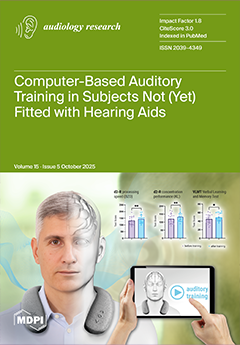Background/Objectives: Skull vibration-induced nystagmus (SVIN) is a rapid bedside test that reveals vestibular asymmetry. Its clinical utility in Ménière’s disease (MD) remains controversial, particularly regarding its association with radiological endolymphatic hydrops (EH). This study aimed to evaluate the relationship between SVIN, audiovestibular parameters, and EH severity in patients with unilateral definite MD.
Methods: This prospective observational study was conducted at a tertiary academic referral center and included patients with unilateral MD who underwent SVIN testing (SVT), audiovestibular evaluation (PTA, cVEMP, oVEMP, vHIT, and caloric testing), and 3T MRI with gadolinium-enhanced 3D-FLAIR sequences to quantify EH.
Results: In total, 84 patients were included in the study. SVIN was present in 57.14% of patients (n = 48), with ipsilesional nystagmus being the most frequent subtype (64.58%). Patients with SVIN had significantly higher vestibular EH (
p = 0.017) and vestibular endolymphatic ratio (REL) in the affected ear (
p = 0.019). Disease duration (
p = 0.026) and shorter time since last vertigo spell (
p = 0.018) were also associated with SVIN presence. REL correlated moderately with disease duration (r = 0.390,
p < 0.001), PTA (r = 0.576,
p < 0.001), and number of vertigo spells (r = 0.236,
p = 0.031), but not with time since last crisis (r = −0.127,
p = 0.252). ROC analysis yielded an AUC of 0.735 for REL in predicting SVIN.
Conclusions: SVIN correlates with the severity of vestibular EH. This finding indicates a stimulus-locked response of a vestibular asymmetry rather than a purely structural alteration.
Full article






